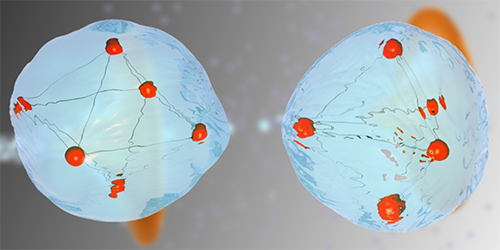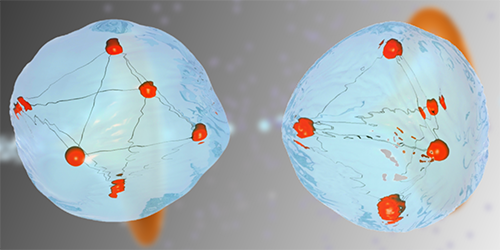Quantum-Fluid Droplets Hold Bevy of Charge
At a low enough temperature, liquid helium becomes a superfluid—a zero-viscosity substance that exerts no friction on matter moving through it. Scientists have assumed that a nanodroplet of the superfluid would break apart if it contained more than a few charges, but they lacked the technology to prove it. New experiments by Michael Gatchell of the University of Innsbruck, Austria, and colleagues show that, in fact, nanodroplets with up to at least 55 charges can still be stable. Helium droplets are often used to facilitate the growth and analysis of nanoparticles, and the new finding could improve such techniques.
The team forced cold helium gas through a narrow nozzle to create droplets ranging from 100,000 to 10,000,000 atoms in size. The nanodroplets were then ionized by an electron beam, separated according to their mass-per-charge ratio, and ionized again. The researchers observed that there was practically no change in a droplet’s mass resulting from the second ionization, so they could associate any decrease in the mass-per-charge ratio with a loss of charge. By measuring this loss, they determined that—prior to the second ionization—droplets containing tens of charges had been stable for several milliseconds.
A single charge in a helium droplet containing other atoms can help nucleate the atoms to form a nanoparticle or nanocluster. With multiple charges, tens of nanoparticles could be fabricated at once. These multiple sites could also be useful for certain kinds of single-particle spectroscopy, with all of the sites adding together to enhance the total signal.
This research is published in Physical Review Letters.
--Meredith Fore
Meredith Fore is a freelance science writer based in Seattle, Washington.





